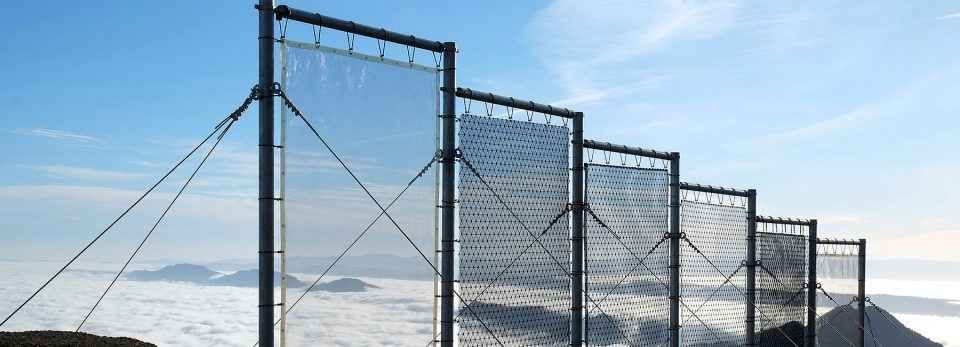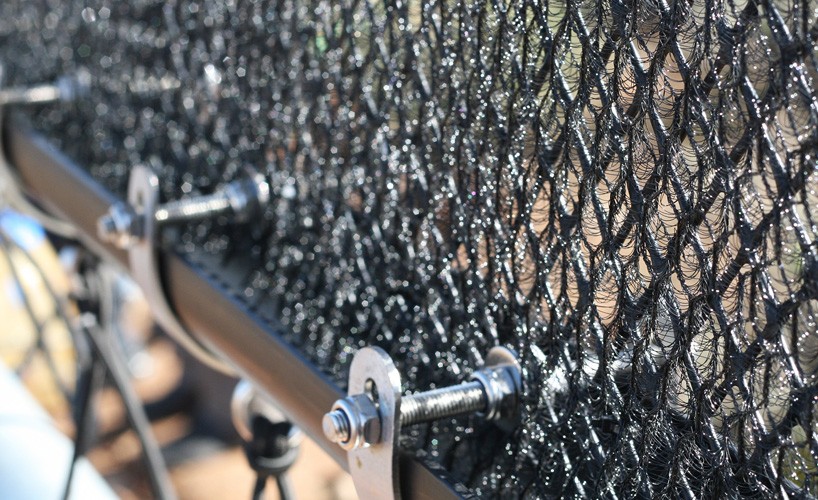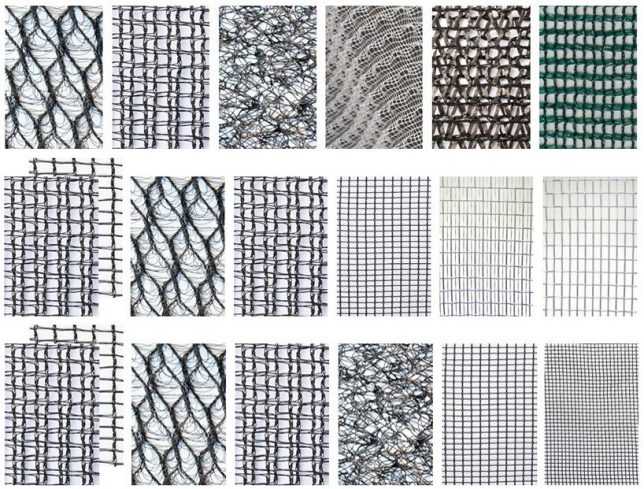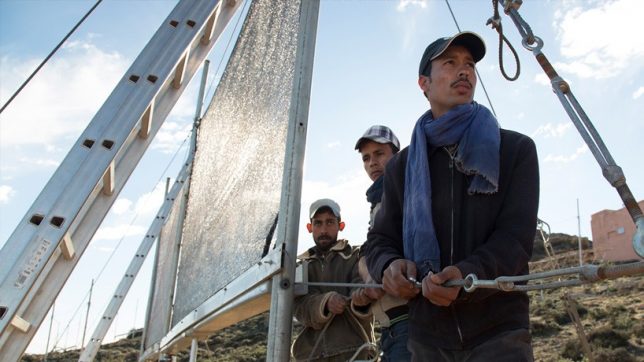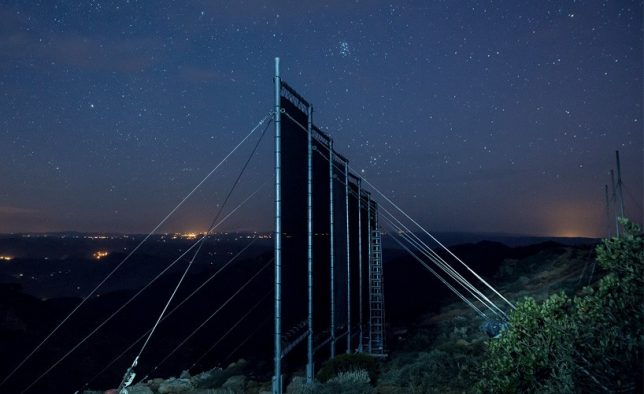In a semi-arid region of Morocco, where tap water is a luxury but fog is plentiful, a fog-harvesting net based on the structure of a spider’s web naturally collects moisture from the air. Engineer Peter Trautwein of the German Water Foundation volunteered his time to develop CloudFisher, a structure that looks like no more than a fence from afar. Get closer, and you’ll see a metal framework supporting the stretched nets, with gutters and tubing directing the collected droplets to tanks.
The nets are placed along the area around Mount Boutmezguida, which is known for being one of the driest parts of Morocco, but also the foggiest. When the wind blows, it pushes moisture into the complex woven netting, effectively trapping it. Rubber expanders holding the nets to the frames reduce the impact of wind pressure on the net to keep them from breaking.
CloudFisher is the result of many years of study, as Trautwein experimented with various structures of net to see which ones yielded the most water. Ultimately, monofilaments were the most effective. The netting’s tiny triangular openings fill with water, which then trickles down to the collector at the base.
The CloudFisher system was installed with the help of NGO Dar si Hmed and won the United Nations Framework Convention on Climate Change (UNFCCC) Momentum for Change Award. It’s capable of harvesting between four and fourteen liters of water per square meter of net, ultimately producing up to 36,000 liters (9,510 gallons) of water a day for the area’s 800 residents.
